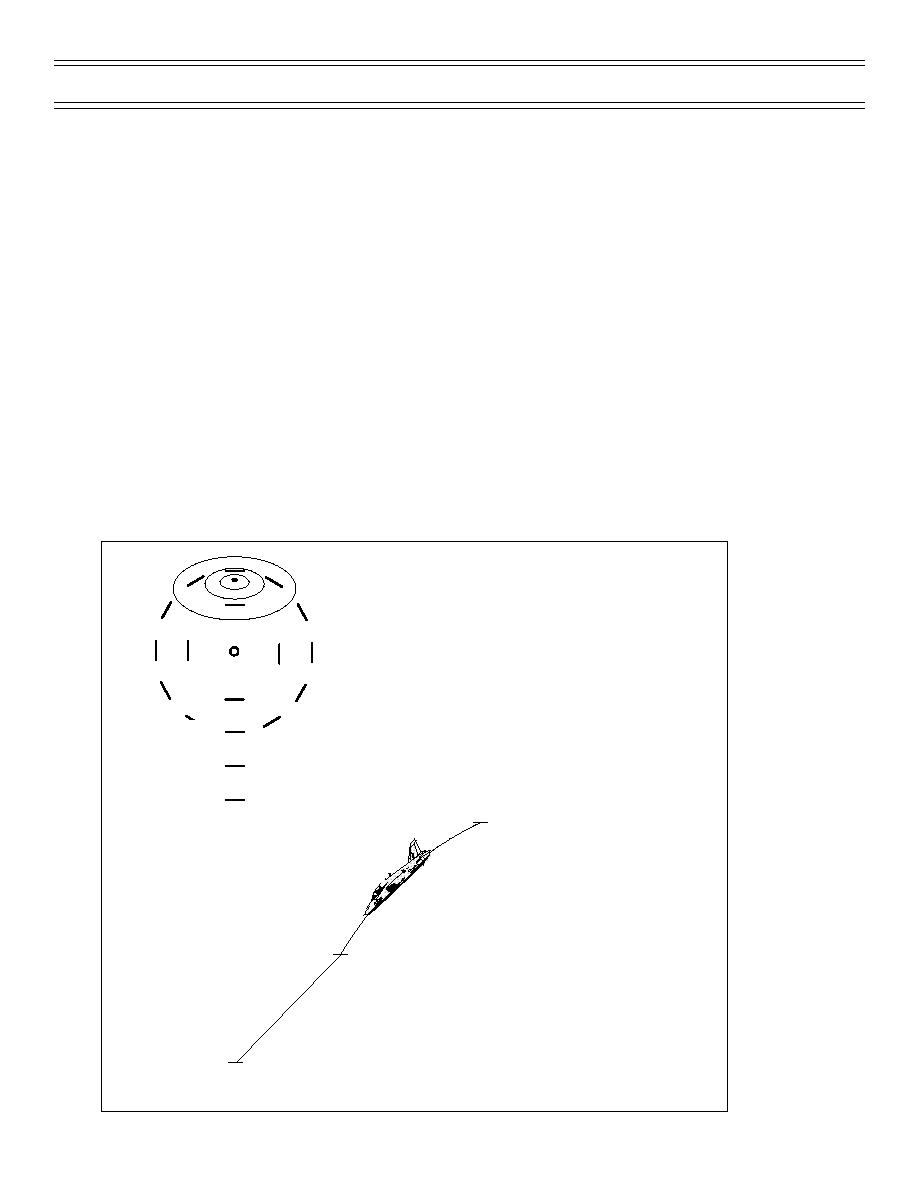
Weapons
Weapons Delivery Principles And Procedures
The guidelines for pipper tracking during straight-path tracking are:
1.
Two-thirds of the mil setting below the aimpoint at three times the release altitude.
2.
One-half of the mil setting below the aimpoint at two times the release altitude.
3.
One-third of the mil setting below the aimpoint at one and a half times the release altitude.
CURVILINEAR TRACKING
During curvilinear tracking, the aircraft flight path becomes convex, with the dive angle continuously
increasing. This is accomplished by placing the pipper on a point on the ground and holding it there
with forward stick pressure. During curvilinear tracking, g will gradually approach zero; because of
this, an attempted release will either hit long or become hung. For these reasons, curvilinear only
tracking is not practiced.
CURVILINEAR/STRAIGHT-PATH TRACKING
This method begins with a curvilinear tracking run, then transitions to straight-path tracking to
release. Upon roll-in, the pipper is held short of the target (or offset aimpoint) by one-third of the mil
setting until reaching one and a half times the release altitude, at which time, straight-path tracking
begins. This method provides checkpoints which allow the pilot to determine the required correc-
tions well before reaching release altitude (Figure 28).
Curvilinear to straight-path tracking initial
sight picture. Aimpoint 42 mils short.
(50 mil ring slightly past target)
Hold this sight picture until 1.5 times your
release altitude (4,500 ft AGL), then allow pipper to
25 mils
track to target. Pipper should arrive at final
aimpoint at release altitude (3,000 ft AGL).
50 mils
75 mils
100 mils
8,000 ft AGL Roll-in
Curvilinear
Tracking
4,500 ft
Straight-path
Tracking
3,000 ft AGL Release
Figure 28: CURVILINEAR STRAIGHT-PATH TRACKING
Page 37
(4-03) Original



 Previous Page
Previous Page
